Oral epithelial IL-22/STAT3 signaling licenses IL-17-mediated immunity to oral mucosal candidiasis
- PMID: 32503875
- PMCID: PMC7340112
- DOI: 10.1126/sciimmunol.aba0570
Oral epithelial IL-22/STAT3 signaling licenses IL-17-mediated immunity to oral mucosal candidiasis
Abstract
Oropharyngeal candidiasis (OPC; thrush) is an opportunistic infection caused by the commensal fungus Candida albicans Interleukin-17 (IL-17) and IL-22 are cytokines produced by type 17 lymphocytes. Both cytokines mediate antifungal immunity yet activate quite distinct downstream signaling pathways. While much is now understood about how IL-17 promotes immunity in OPC, the activities of IL-22 are far less well delineated. We show that, despite having similar requirements for induction from type 17 cells, IL-22 and IL-17 function nonredundantly during OPC. We find that the IL-22 and IL-17 receptors are required in anatomically distinct locations within the oral mucosa; loss of IL-22RA1 or signal transducer and activator of transcription 3 (STAT3) in the oral basal epithelial layer (BEL) causes susceptibility to OPC, whereas IL-17RA is needed in the suprabasal epithelial layer (SEL). Transcriptional profiling of the tongue linked IL-22/STAT3 not only to oral epithelial cell proliferation and survival but also, unexpectedly, to driving an IL-17-specific gene signature. We show that IL-22 mediates regenerative signals on the BEL that replenish the IL-17RA-expressing SEL, thereby restoring the ability of the oral epithelium to respond to IL-17 and thus to mediate antifungal events. Consequently, IL-22 signaling in BEL "licenses" IL-17 signaling in the oral mucosa, revealing spatially distinct yet cooperative activities of IL-22 and IL-17 in oral candidiasis.
Copyright © 2020 The Authors, some rights reserved; exclusive licensee American Association for the Advancement of Science. No claim to original U.S. Government Works.
Conflict of interest statement
COMPETING INTERESTS
SLG previously received a grant from Janssen to evaluate anti-IL-17A antibody function in OPC (110). Candidalysin has been patented by King’s College London, UK and Hans-Knöll Institut, Jena, DE (US Patent No.: 9,969,796; EU Patent No.: 2984103). The other authors declare no competing interests.
Figures
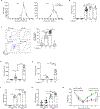

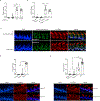
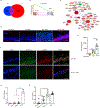
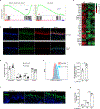
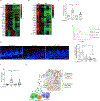
Similar articles
-
Role of neutrophils in IL-17-dependent immunity to mucosal candidiasis.J Immunol. 2014 Feb 15;192(4):1745-52. doi: 10.4049/jimmunol.1302265. Epub 2014 Jan 17. J Immunol. 2014. PMID: 24442441 Free PMC article.
-
Interleukin-17-induced protein lipocalin 2 is dispensable for immunity to oral candidiasis.Infect Immun. 2014 Mar;82(3):1030-5. doi: 10.1128/IAI.01389-13. Epub 2013 Dec 16. Infect Immun. 2014. PMID: 24343647 Free PMC article.
-
The adaptor CARD9 is required for adaptive but not innate immunity to oral mucosal Candida albicans infections.Infect Immun. 2014 Mar;82(3):1173-80. doi: 10.1128/IAI.01335-13. Epub 2013 Dec 30. Infect Immun. 2014. PMID: 24379290 Free PMC article.
-
Immunity to Candida.Oral Dis. 2002;8 Suppl 2:69-75. doi: 10.1034/j.1601-0825.2002.00015.x. Oral Dis. 2002. PMID: 12164664 Review.
-
Candida-host interactions in HIV disease: relationships in oropharyngeal candidiasis.Adv Dent Res. 2006 Apr 1;19(1):80-4. doi: 10.1177/154407370601900116. Adv Dent Res. 2006. PMID: 16672555 Review.
Cited by
-
Mucosal Immunity to Gut Fungi in Health and Inflammatory Bowel Disease.J Fungi (Basel). 2023 Nov 14;9(11):1105. doi: 10.3390/jof9111105. J Fungi (Basel). 2023. PMID: 37998910 Free PMC article. Review.
-
The Role of the Oral Immune System in Oropharyngeal Candidiasis-Facilitated Invasion and Dissemination of Staphylococcus aureus.Front Oral Health. 2022 Apr 7;3:851786. doi: 10.3389/froh.2022.851786. eCollection 2022. Front Oral Health. 2022. PMID: 35464779 Free PMC article. Review.
-
Increased STAT3 Activation in Periodontitis Drives Inflammatory Bone Loss.J Dent Res. 2023 Nov;102(12):1366-1375. doi: 10.1177/00220345231192381. Epub 2023 Sep 12. J Dent Res. 2023. PMID: 37697911 Free PMC article.
-
Knowledge mapping and research trends of IL-22 from 2014 to 2023: A bibliometric analysis.Hum Vaccin Immunother. 2024 Dec 31;20(1):2426321. doi: 10.1080/21645515.2024.2426321. Epub 2024 Nov 14. Hum Vaccin Immunother. 2024. PMID: 39540219 Free PMC article.
-
Long-term antibiotic exposure promotes mortality after systemic fungal infection by driving lymphocyte dysfunction and systemic escape of commensal bacteria.Cell Host Microbe. 2022 Jul 13;30(7):1020-1033.e6. doi: 10.1016/j.chom.2022.04.013. Epub 2022 May 13. Cell Host Microbe. 2022. PMID: 35568028 Free PMC article.
References
Publication types
MeSH terms
Substances
Grants and funding
- R35 HL139930/HL/NHLBI NIH HHS/United States
- R01 DE022550/DE/NIDCR NIH HHS/United States
- R37 DE022550/DE/NIDCR NIH HHS/United States
- R01 DK104680/DK/NIDDK NIH HHS/United States
- R01 AI107825/AI/NIAID NIH HHS/United States
- S10 OD011925/OD/NIH HHS/United States
- R01 AR060744/AR/NIAMS NIH HHS/United States
- U19 AI110820/AI/NIAID NIH HHS/United States
- R01 DE023815/DE/NIDCR NIH HHS/United States
- K01 HL135476/HL/NHLBI NIH HHS/United States
- R03 HL154231/HL/NHLBI NIH HHS/United States
- WT_/Wellcome Trust/United Kingdom
- R01 AR071720/AR/NIAMS NIH HHS/United States
LinkOut - more resources
Full Text Sources
Molecular Biology Databases
Miscellaneous

